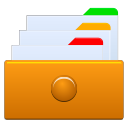 It’s that time again! Whether you prepare your own tax return or employ a tax preparer, it’s time to gather information about your income and deductions. Ugh! Compiling tax information is not the most fun thing in the world- but you gotta do what you gotta do, right?
It’s that time again! Whether you prepare your own tax return or employ a tax preparer, it’s time to gather information about your income and deductions. Ugh! Compiling tax information is not the most fun thing in the world- but you gotta do what you gotta do, right?
First, gather all of the statements you received about your income. If you receive wages or retirement benefits, the payer should have sent you a Form W-2 or W-2P by January 31 that shows your income and withholdings. If you are paid on commission or are an independent contractor, your income will be reported to you on Form 1099. You will also receive a 1099 form for other payments, such as interest, dividends proceeds from the sale of real estate or securities, and tax refunds.
Even if you didn’t receive a notice from the payer, you still have to declare all taxable income that you have received during the year. Also, if you received a check in December but did not deposit it until after January 1, it is still taxable income to you when you received it, not the year you deposited it into your bank account.
Next, let’s tackle your deductions. Go through your monthly bank statements and collect the canceled checks representing tax-deductible items. Be sure to review your January bank statement to remove checks written in the prior year that had not cleared by the beginning of the new year.
Sort the deductible checks into groups, such as donations, taxes, medical and dental, interest, and miscellaneous deductions. Locate the receipts for bills that you paid with cash, and place them together with the canceled checks. Also list amounts that you paid by credit card. Total the checks and receipts for each category, and transfer these totals to a summary of your tax-deductible items.
After summarizing your tax data, insert the checks and receipts into envelopes and file by category. Place all the envelopes in a large manila envelope labeled “20__ Tax Information” for safe-keeping.
Also review the deductions you claimed on last year’s tax return, to be sure you aren’t missing anything that might be deductible. A tax guide such as the Ernst & Young Tax Guide can help jog your memory.
Most tax preparers base their fees on the amount of time that is required to prepare your tax return. By summarizing your tax information, you will greatly reduce the time required to prepare your tax return, and the savings in preparation fees will be well worth the additional time that it took to prepare your tax summary.
Now, that the hard part’s done, you can go out to enjoy the spring weather!
